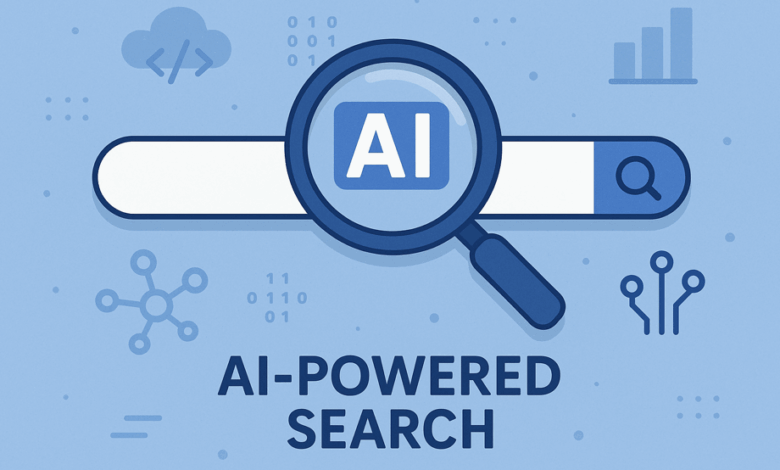
You’ve probably noticed something big happening in search. Tools like ChatGPT, Perplexity, and Google’s AI Overviews aren’t just pointing people to websites anymore, but answering questions right there on the spot. That means fewer clicks and more zero-click experiences where the answer comes straight from the AI.
For anyone creating content, this changes the game. The way people look for information is shifting from short keywords to full, natural-language questions.
This doesn’t mean traditional SEO is dead, but it does mean we need to adjust our workflows and work in favor of the AI.
What Makes Answer Engines Different from Search Engines
Traditional search engines work like directories. You type in a keyword, and the engine delivers a ranked list of links. The expectation is that users will click through, evaluate sources, and piece together the answer themselves.
Answer engines, on the other hand, skip the list. They generate responses directly in natural language, often pulling from multiple sources at once. Instead of giving you “ten blue links,” they act like a guide who’s already read those pages and distilled the key points for you.
Two things make this shift possible:
The result is a more fluid search experience. People no longer “browse for information” the same way. They expect immediate clarity, and answer engines are designed to meet that expectation. For businesses, the challenge is ensuring that when the AI answers, your brand’s knowledge and authority are what get surfaced.
How User Behavior Is Shifting in the Age of AI
Instead of short, choppy keywords like “best CRM 2025”, users are now asking full and natural-language questions like “What is the best CRM solution for small businesses in 2025?”. This conversational style aligns perfectly with how answer engines process queries.
Another noticeable shift is the rise of zero-click experiences. We no longer click on different links to skim through the content and find the necessary information. In March 2025, zero‑click searches accounted for 27.2% of US queries (up from 24.4% in March 2024), and about 26.1% in the EU/UK (up from 23.6%). While this can feel like a loss in traffic, the direct answers coming from AI still need reliable and high-quality sources to feed the responses.
Core Principles for Creating AI-Friendly Content
Creating content that doesn’t just exist online, but actually gets picked by AI engines, comes down to a few core principles.
1. Write Clear, Factual, and Authoritative Answers
Answer engines are designed to cut through the noise.
This means they favor straightforward, evidence-backed content that leaves little room for ambiguity. Your approach here can be writing as if explaining to someone who only has 15 seconds to understand your point: concise, accurate, and authoritative.
2. Use Structured Formats That Machines Can Easily Read
AI tools thrive on structure.
Your content should have clear hierarchical elements like headings, subheadings, bullet points, and tables to help the algorithms parse content and understand the information. Add schema markup of FAQ sections with the key questions answered to give your content an extra boost and help AI systems provide direct answers.
3. Build Trust With Credibility and Sources
Answer engines want text they can trust.
Citing recent studies, linking to authoritative sources, and keeping your information up to date will send extra signals to the AI engines that your content is reliable. Remember, if AI includes your content in a response, your reputation rides on that accuracy.
4. Keep Information Fresh and Current
Outdated content risks being overlooked.
AI models are always on the hunt for fresh insights, updated statistics, and examples. This is true not only for the AI-powered answer engines but also for users, who want to receive real-time answers to their questions.
Practical Adjustments to Your Content Strategy
Knowing the principles is one thing, yet putting them into action is where the real impact happens. Your end goal should be making your content both easy for AI to parse and valuable for humans to consume.
This shift doesn’t suggest a complete content strategy reinvention, but it still brings some intentional adjustments. Creating an ecosystem with direct answers, structured signals, and topical authority, you become a source that AI systems look for when generating responses.
Here are a couple of ways you could adapt:
Rethinking Success Metrics for the AI Era
Website traffic and click-through rates have been the gold standards for measuring any website’s content performance. But thanks to AI those numbers can only show a part of the picture today.
One critical adjustment is to track when and where your brand is being cited by answer engines. This can mean monitoring mentions within AI summaries, checking for your content in zero-click answers, or even testing prompts to see whether your expertise is referenced. Visibility in these answers is a new type of brand exposure. One that builds awareness and trust even if the user never lands on your site.
The solution is straightforward. Shift your focus to prioritizing credibility, authority, and recal even with traffic drops.
Preparing for the Future of Search and AI
SEO is no longer the only way to secure visibility in search results. AI search has brought us to such new forms of optimization as Generative Engine Optimization (GEO), Answer Engine Optimization (AEO), and Large Language Model Optimization (LLMO).
These terms will come into a broader use quite soon, so it’s worth studying them now and applying their principles.
Conclusion
AI-powered answer engines are changing how visibility works online. Focusing on content that is reliable, adaptable, and clear is how you stay relevant even if the clicks decline.
Success now lies in becoming the source that both people and AI systems can recongnize and rely on.





